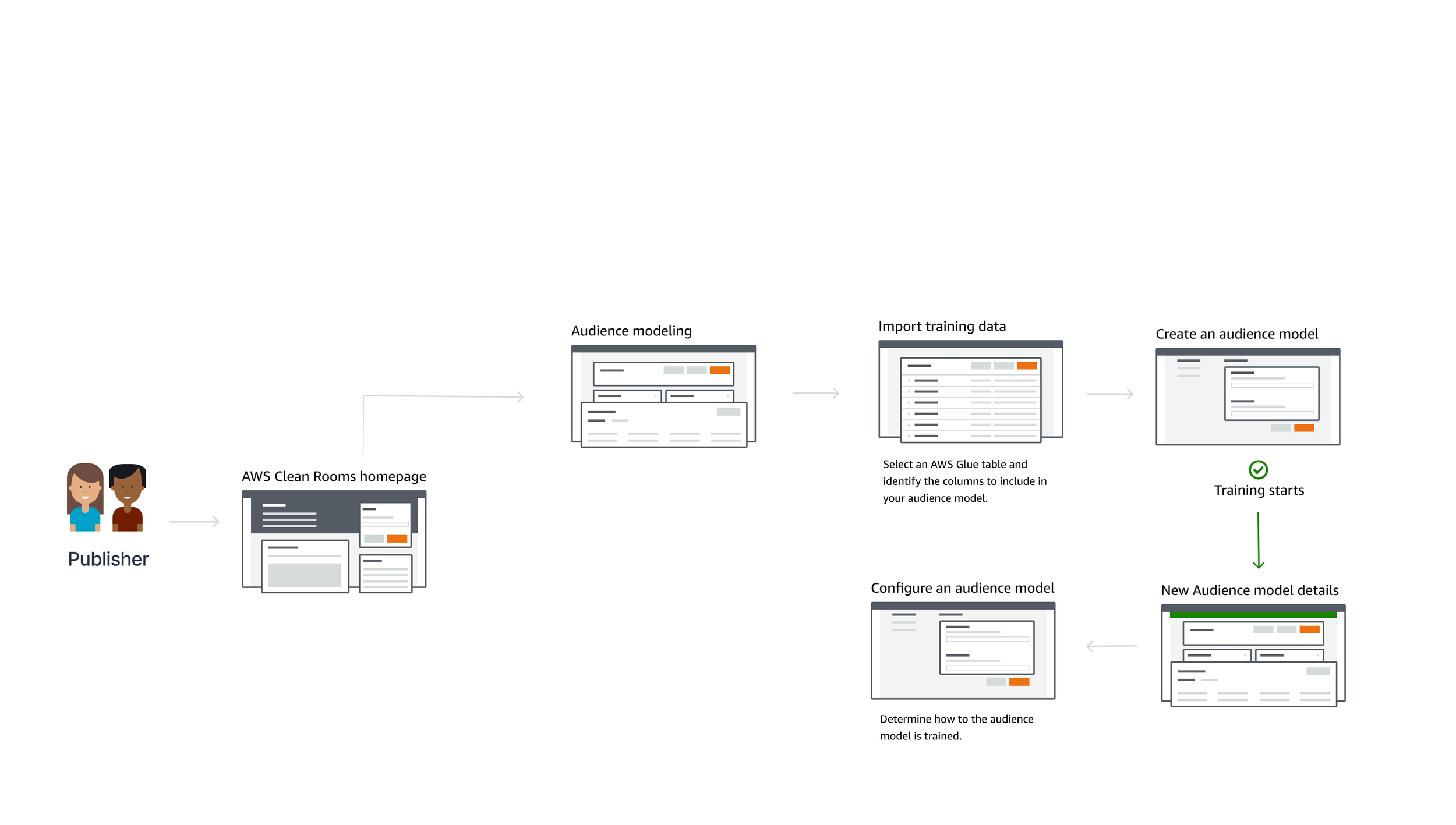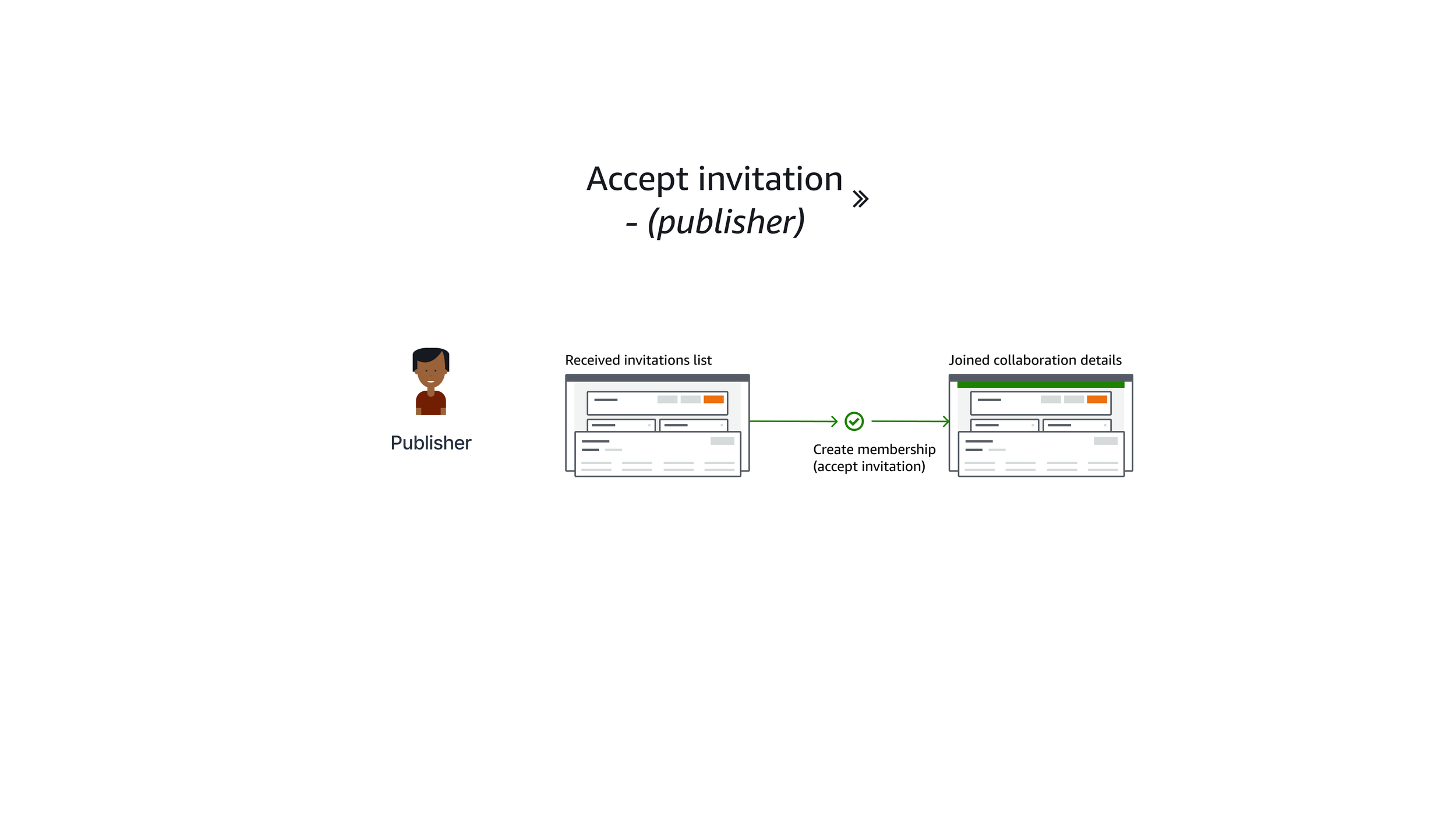AWS Clean rooms ML
AWS Clean Rooms ML help companies connect, analyze, and activate their advertising campaigns together without sharing underlying data. Brands and publishers can model lookalike segments of in-market customers and deliver highly relevant advertising experiences.
Company: Amazon web service (aws)
AWS Clean Rooms ML helps customers and their partners apply privacy-enhancing controls to safeguard their proprietary data and ML models while generating predictive insights—all without sharing or copying one another’s raw data or models. Customers can streamline data preparation and matching for AWS Clean Rooms, and easily upload collaboration outputs into leading advertising platforms using a suite of guided workflows and automation tools.
My Role
I spearheaded end to end user experience for AWS Clean Rooms ML.
My role for this project included:
Contributed in defining product strategy, product requirements, with customer interviews and early concepts with engineering team.
Aligned with partner teams to identify opportunities and existing patterns and validated new solution with customer feedback (user testing).
Advocated simpler design solution and influenced leadership to invest in improving UX flow of the existing partner feature making trade-offs in long term customer needs vs. immediate business needs.
Identified tech improvements that unlocked innovation and unblock delivery.
Success Metrics
With AWS Clean Rooms ML on average customers had 34% increase in their detail page view rate and 24% higher shopper transaction value on partner platform.
AWS LAUNCH ANNOUNCEMENT
Project timeframe
3 months(August 2023- October 2023) - Preview
3 months(January 2024- March 2023) - GA
Launched: Preview November 2023 and Generally Available (GA) April 2024.
PLATFORM
Responsive, Enterprise product.
Team
Product Manager, Data Scientist, Front-end developers, Backend developers, Legal, UX copywriter.
UX Tools Used
Figma, Figjam, Usertesting.com
CONTEXT
AWS Clean Rooms ML allows two parties to identify similar users in their data without the need to share their data with each other. Currently customers are using AWS-authored lookalike model and inviting their partners to bring a small sample of their records to a collaboration to generate an expanded set of similar records while protecting their and their partners' underlying data. However, customers demand for using custom models had been growing that needed to be addressed and unlock other use case possibilities.
PROPOSED SOLUTION
To bridge this gap, we launched AWS Clean Rooms ML custom modeling, which enables organizations to generate predictive insights with their partners running their own machine-learning (ML) models and using their data in a clean rooms collaboration. With this launch, companies and their partners can train ML models and run inference on collective datasets without having to share sensitive data or proprietary models.
Value Proposition
Expands customer base to industry agnostic
Unlocks other use cases that were not possible before.
Enhance capability of the product- Customers get to specify what the model provider and training data provider can do.
Target users
Target customers are advertisers and publishers, financial institutions, research institutions and hospital networks.
the design process
I led the daily/weekly meeting with my stakeholders including Product Manager (PM), Data Science team, Engineering team through out the design process.
Empathize and Discover: I teamed with Product Manager, Data Scientist, and legal team to strategize accurate and deep intuitive understanding of the customer needs and translate concepts into features that addressed user’s information needs and behavior. I created journey maps, user flows, and task analysis during early design phase.
User Interviews: I conducted customer interviews to gather and understand their requirements and constraints. I collaborated with Product Manager and various customers to gain insight into user behavior and expectations from the early design stage. I was rapidly prototyping and iterating based on customer feedback and stakeholder feedback.
Hunt for Data Source and Utilize Metrics and collaborate with diverse teams: I collaborated with engineering team to get adoption metrics for existing “AWS Authored Modeling ” feature in AWS Clean Rooms to understand how customers are using current flow and how we could improve the flow in the new custom modeling feature. I collaborated with partner team of AWS Clean Room to understand the flow and force multiplied to improve the existing flow to incorporate the ease of use of both AWS Clean Rooms and AWS Clean Rooms ML.
Strategy, Vision, Ideation and Iteration: I conducted design workshops with the stakeholders to discover early stage concept designs which were used to customer feedback in user interview. I proposed the new design solution to the product directors of both teams and redefined product goal with a solution of improved User experience for our customers.
Testing and Validation : I tested and validated the designs with customers early and during various stages of the design process to craft the final product. I validated the final design solution with customer feedback.
What is AWS Clean Rooms ML
Challenges & Lessons learned
AWS Clean Rooms ML when announced generally available in April 2024, it enabled customers to leverage lookalike modeling with AWS Authored models, however when customers asked for the capability of using their own custom models, and during the making of it, I took customer feedback with early designs to understand their needs. Based on early feedback from the customer, we learnt that customers are leaning more towards custom models(or bring your own model) as compared to AWS authored models and hence my design decision was to make custom models as the default option and then let customers choose AWS authored models if they preferred it. This disparity caused disagreement with AWS Clean Rooms team and the leadership. I influenced the partner team and their leadership towards our decision at the org level with my design strategy. I collaborated with AWS Clean Rooms team to mitigate risks and managed dependencies of Clean Rooms ML and design decisions effectively. I proposed simpler design solution for both AWS Clean Rooms and AWS Clean Rooms ML that influenced product and engineering decisions.







